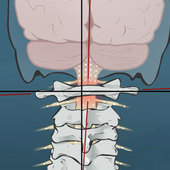We commonly get questions from our patients about treating children. Whether it’s a particular sign that a parent notices, or a concern for the pro-active prevention of issues that they themselves may be suffering from, parents often will inquire if they should get their children checked, and what exactly that process entails.
 Kids are typically less complicated than adults; they haven’t had years of biomechanical stress and breakdown, and they usually have spines that are in much better shape. We recommend that kids get checked right from the get-go; the birth process can be a tough time, both for mom and baby. Some babies may also favour looking to one side and will not want to move their head in a particular direction, leading to a flattened spot on their head. If any of these signs are apparent, it is recommended that the baby undergoes an assessment of their upper neck region.
Kids are typically less complicated than adults; they haven’t had years of biomechanical stress and breakdown, and they usually have spines that are in much better shape. We recommend that kids get checked right from the get-go; the birth process can be a tough time, both for mom and baby. Some babies may also favour looking to one side and will not want to move their head in a particular direction, leading to a flattened spot on their head. If any of these signs are apparent, it is recommended that the baby undergoes an assessment of their upper neck region.
With babies, the checkup is pretty straightforward and can usually be done in a 30 minute appointment; specialized pediatric tests give great information on if there is compromise to the upper neck region. Once kids are walking and able to support their spines in a more upright position, the assessment adapts to be more similar to adult testing in that we incorporate posture and leg length imbalances as an indicator as to whether or not there is compromise to their spinal alignment and mechanics. As always, the adjustment is very non-invasive, very gentle, and most kids think it’s a lot of fun to hop up on the table and go for a ride up and down!
In the absence of any apparent health concerns, it is recommended that kids get checked pro-actively at 3 months of age. We also like to check kids after big milestones, such as crawling and walking, or after any big bumps or falls they might endure. Intervening in the younger years is a lot faster and easier than waiting until a more significant, chronic issue is present. Structural balance can dictate the development of muscle tone and joint symmetry all the way up to the teenage and young adult years, so it is important to ensure that children are growing into a frame that is nice and balanced.
“As the twig is bent, so grows the tree.” – Alexander Pope in 1734
If you have any questions about your own children and how to book a checkup, talk to your upper cervical practitioner today!
Written by Dr. Mylène Hopf



